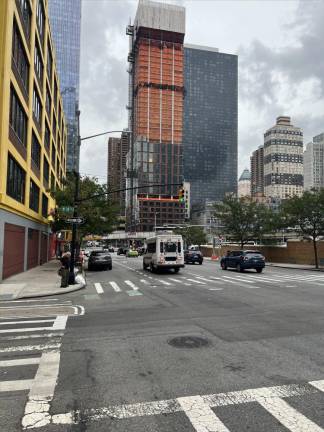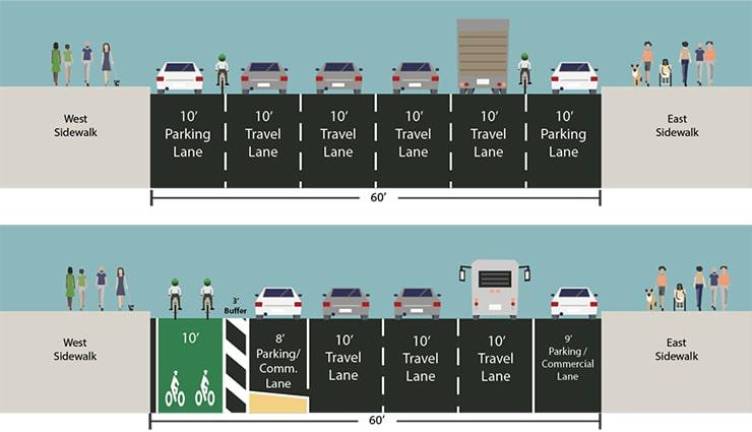DOT Says It Began Building New Protected Bike Lane on 10th Avenue
The DOT says that the ten-foot-wide parking-protected lane, which will extend from W. 38th St. to W. 52nd St., will “better accommodate micromobility” and feature a “host of safety improvements.” Construction supposedly began on August 23.


Tenth Avenue seemed to be its usually frenetic self on the cool overcast morning of August 24, as some commuters plied their way uptown on foot alongside drivers of bulky SUVs. There was no sign of the construction at the W. 38th cross street that the Department of Transportation (DOT) said had commenced the day earlier, which will reportedly be bringing a ten-foot-wide protected bike lane–not to mention redesigned intersections and “concrete pedestrian islands”–to a swath of Manhattan’s West Side that will extend from that intersection to W. 52nd Street.
The logic the DOT is advancing for the project is that it will “accommodate the burgeoning number of micromobility users and promote social cycling.”
“We are reimagining Tenth Avenue for a safer, more sustainable future. This project will deliver much-needed safety upgrades to the Hell’s Kitchen corridor and help support more efficient transportation options. More people are cycling than ever before and by designing wider bike lanes we can keep encouraging this growth while providing more comfortable riding experiences,” DOT Commissioner Ydanis Rodriguez said.
The DOT also claims that installed protected bike lanes elsewhere “have reduced deaths and serious injuries among all road users by 18.1 percent, with a 29.2 percent decline for pedestrians,” mainly through reduced traffic and added visibility.
The agency expressly noted the project’s ultimate approval by Manhattan’s Community Board 4, which was reportedly unanimous.
“This dangerous vehicle artery carries many trucks and private vehicles and is in drastic need of updating. MCB4 applauds NYC DOT and [District 3 City] Council Member Eric Bottcher for making this a priority. DOT’s design will improve safety for all users and includes wider lanes, concrete islands, and protected crossing signals,” proclaimed Board chair Jeffrey LeFrancois.
Indeed, Bottcher has been a vocal proponent for the project, which will affect his constituents. ”This redesign is how we give these people those protections. I want to applaud the DOT and CB4 for their tireless efforts on this. Streets should be designed with safety and the human experience in mind. New Yorkers deserve nothing less,” he declared.